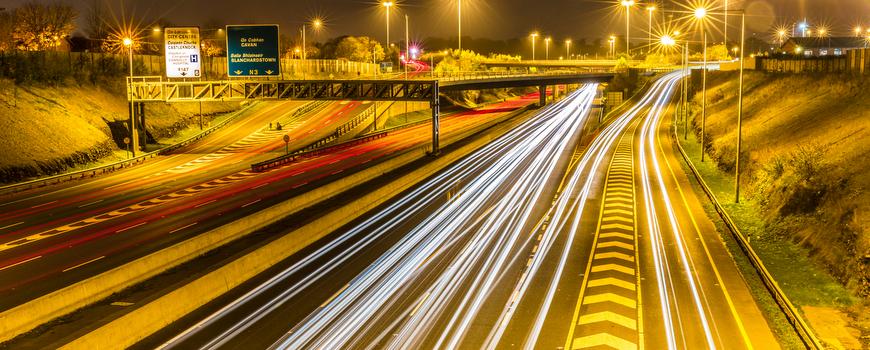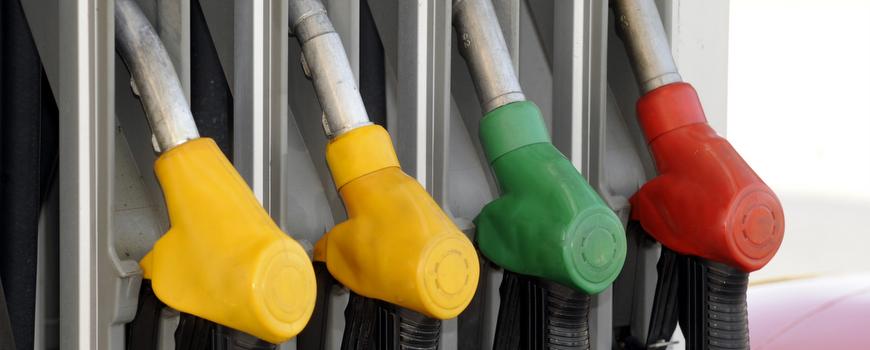
Environmental specifications for transport fuels in the European Union are set out in a series of EU directives. The 2009 Fuel Quality Directive (FQD) (2009/30/EC) introduced a target for transport fuel suppliers to reduce life-cycle greenhouse gas (GHG) emissions from fuels by the end of 2020. However, the Directive, which amended the 1998 FQD has not yet been transposed by several Member States, including Ireland. The revised deadline for doing so is now less than one year away.
A 'new' 2020 target
The amended FQD applies to fuels and electricity used in road vehicles, non-road mobile machinery, inland waterway vessels (when not at sea), agricultural and forestry tractors and recreational craft (when not at sea). This article focuses on two specific amendments to the FQD:
- The introduction of reporting obligations for fuel suppliers, to include the life-cycle GHG emissions from fuels and electricity.
- The introduction of a 6% supplier target for the reduction of life-cycle GHG emissions per unit energy from fuels and electricity, by the end of 2020, compared to a 2010 baseline.
The primary mechanism for meeting the 6% reduction target will be biofuels. The use of electric vehicles (EVs) and upstream emission reductions (UERs) will also contribute. The latter are reductions to GHG emissions emitted prior to raw material (fuel) entering a refinery or a processing plant.
Transposition into national legislation
Directive 2009/30/EC was due to be transposed into national legislation by 31 December 2010. However, due to a lack of clarity on the mechanisms and calculation methods to be used, many Member States, including Ireland, have not fully transposed the FQD.
In April 2015, Council Directive (EU) 2015/652 set out the methodology for calculating the GHG intensity of fuels and the reporting format for suppliers and Member States. This Directive and the 2009 Directive must now be transposed by April 2017.
We anticipate that the transposition of the 2009 FQD into Irish legislation will be completed in advance of this.
Targets & reporting obligations

Each Member State must designate the suppliers that are responsible for reporting and meeting the reduction target. A supplier is defined as being 'the entity responsible for passing fuel or energy through an excise duty point or, if no excise is due, any other relevant entity designated by a Member State'. In Ireland, it is probable that most of the companies obligated under the biofuel obligation scheme (BOS) will be designated as suppliers under the FQD.
Each Member State must allow the suppliers of electricity for use in EVs to contribute to the reduction in GHG intensity, if they choose to do so.
Targets
Suppliers must reduce life-cycle GHG emissions per unit energy (i.e. the GHG intensity) by up to 10% by 2020, compared to a 2010 baseline. This 10% is broken down as follows.
- A reduction of 6% by December 2020.
- An additional 2%, subject to adjustment by the European Commission, to be achieved through the supply of electricity for transport and/or the use of any technology capable of reducing life-cycle GHG per unit energy, including carbon capture and storage.
- An additional 2%, subject to adjustment by the European Commission, to be achieved by the use of credits purchased through the clean development mechanism of the Kyoto Protocol (detailed in Directive 2003/87/EC).
Groups of suppliers will be able to meet the GHG reduction target jointly, i.e. a supplier will be able to trade GHG emissions with other suppliers.
It is our understanding that the 6% target is the only binding target. Member States may also introduce intermediate targets, i.e. for the year(s) preceding 2020. Germany has already done so; since January 2015, German suppliers have been required to meet a GHG reduction target.
Scope of supplier reporting
Obligated suppliers must report the following information (as a minimum) on an annual basis to a designated authority:
- The total volume of each type of fuel or energy supplied (within each State), indicating place of purchase and the origin.
- Life-cycle GHG emissions per unit energy.
How will it work?

Fuel GHG intensity can be reduced through the substitution of fossil fuels with biofuels, through the use electricity in transport or through the implementation of UERs.
Sustainability criteria for biofuels
For a biofuel to be counted for the purposes of meeting the FQD target, it must meet the sustainability criteria as set out in the FQD. The sustainability criteria for biofuels, and the verification requirements for compliance with the sustainability criteria, are the same for both the FQD and the Renewable Energy Directive (RED). Consequently, compliance with the RED sustainability criteria is sufficient to ensure compliance with the sustainability requirements of the FQD.
Annex IV of the FQD contains default values for the GHG intensity of biofuels produced from various feedstocks and processes. These values can be used by suppliers to demonstrate their progress towards the FQD target and are the same as the values that are contained in the RED.
The use of biofuels to meet the FQD target is subject to the Indirect Land Use Change (ILUC) Directive ((EU) 2015/1513), which also applies to the RED targets. The ILUC Directive was adopted in September 2015 and must be transposed into national legislation by September 2017. Our analysis of the implications of the ILUC Directive will be addressed in a separate article.
Biofuel in aviation
Suppliers of aviation fuel are not subject to the FQD target; however, Member States have the option of allowing suppliers of biofuel for use in aviation to choose to contribute towards the target. This allows the GHG savings associated with such biofuel use to contribute towards the target in other supply areas, e.g. road transport.
Electric vehicles
The electricity consumption of EVs must be calculated from the distance travelled and the electricity consumption efficiency (MJ/km). Suppliers must use the GHG intensity for electricity, as calculated by Member States on a national average life-cycle basis.
Calculation methods & standard values
Directive (EU) 2015/652 specifies relevant calculation methods and reporting requirements, and provides the following standard values:
- A fuel baseline standard of 94.1 gCO2eq/MJ will apply. This is the GHG intensity level against which suppliers’ progress towards the 6% target will be measured. The baseline standard represents the average GHG intensity of fuel used across the EU in 2010. Therefore, to comply with the 6% FQD target, the GHG intensity of suppliers’ fuel and energy mix must be equal to or less than 88.5 gCO2eq/MJ.
- Suppliers will be required to use default GHG intensity values of 93.3 gCO2eq/MJ and 95.1 gCO2eq/MJ for fossil-derived gasoline and diesel respectively.
Upstream emission reductions (UERs)
UERs are reductions to GHG emissions that arise prior to the raw material entering a refinery or a processing plant. According to a European Commission impact assessment, upstream emissions amount to 5% of the GHG intensity of transport fuels, while tail-pipe and downstream (refining and transport) emissions amount to 85% and 10% respectively.
UERs will be based on emission reduction projects, primarily at oil and gas production and extraction facilities, that commenced after 1 January 2011. For conventional crude oil, the primary target area for UERs is likely to be the reduction of flaring and venting of natural gas, particularly in West Africa and Russia. Suppliers may claim UERs from projects that are monitored, reported and verified in accordance with ISO 14064. At present, there is uncertainty as to how UERs will be accounted for and tracked through the supply chain.
Ireland's progress
We present our analysis of the progress made to date by Ireland's fuel suppliers towards the 2020 FQD target, and potential scenarios for compliance with it, in a separate article.
